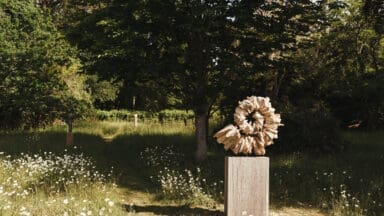
John Chetwynd Talbot, built Falconhurst in the 1850s which has remained in the Talbot family for six generations. United by a deep appreciation for the countryside, cricket, music and the arts each successive generation have put their own stamp on the estate. While her husband, Charles Talbot and son George, oversee the management of the (700-acre) estate, Nicola oversees the gardening team, events and curates the sculpture exhibition, Stone at Falconhurst.
Inspired by a visit to onform at Asthall Manor, Nicola unveiled Stone at Falconhurst in 2024. Currently in its second year, the exhibition has not only expanded in terms of the number of works on display but also incorporates works set within the house as well as the garden. The 2025 exhibition showcases some 20 renowned British sculptors, including Luke Dickinson, Kim Francis, Mel Fraser, Jason Mulligan, Gabriele Risso, Guy Stevens, Tom Stogdon, and Anthony Turner, alongside other longstanding exhibitors from on form, such as Regis Chaperon, Benji Lowsley Williams, Nichlas Moreton, Ana Ruiz Agui, Mark Stonesteet, Lucy Unwin, Paul Vanstone, and Dominic Welch.
Similar to onform, sculptures are thoughtfully displayed throughout the Falconhurst gardens and house. Boasting stunning views, the five acre garden with its deep herbaceous borders, evidently benefitted from mature planting only possible thanks to the 160 years of care and development by successive Talbot generations. Surrounded by the farm, the garden features large expanses of wildflowers and areas of long grass to contrast the extensive herbaceous borders, underscoring Falconhurst’s idyllic countryside setting.
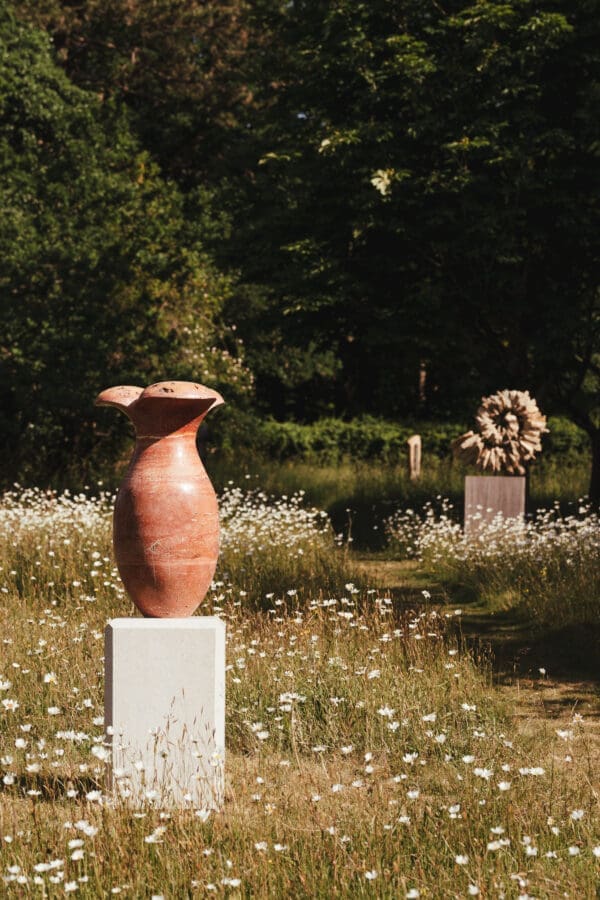
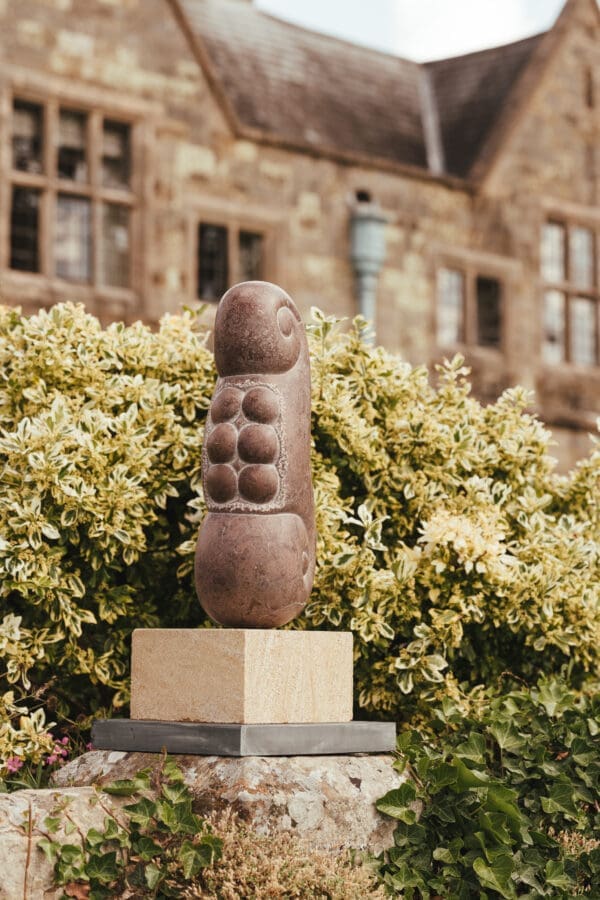
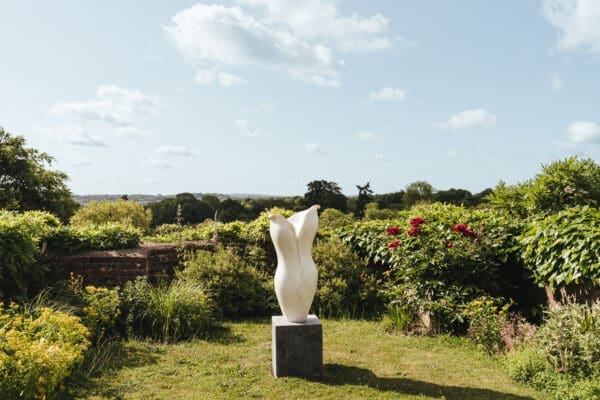

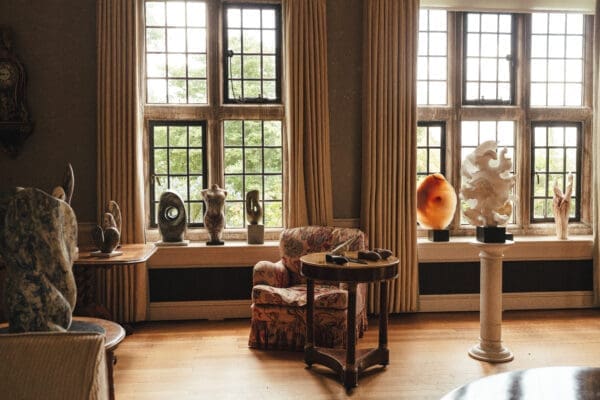
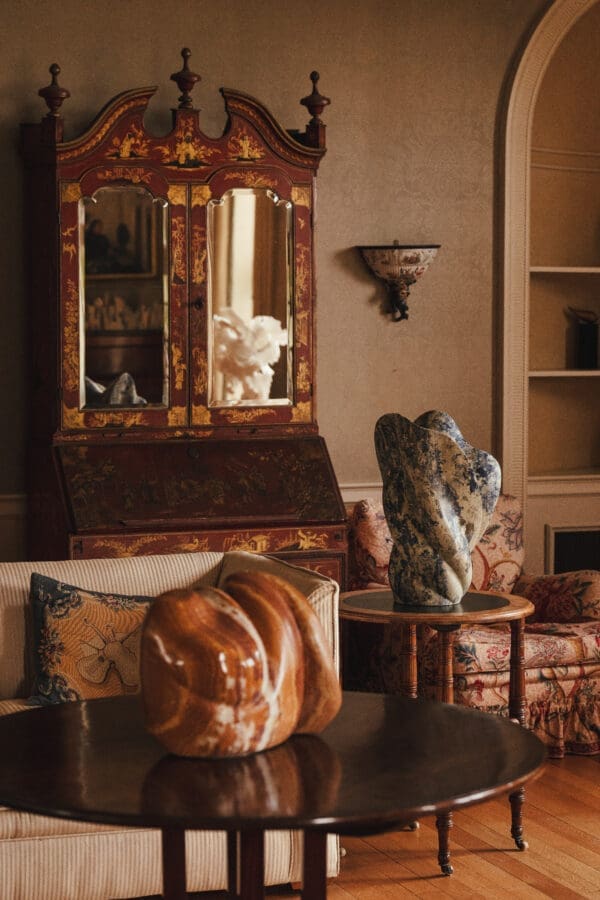
Encouraged by her love of sculpture, the curation of the exhibition involves careful selection and arrangement of works to create a cohesive and meaningful experience around the house and gardens for visitors. With each artwork meticulously numbered and positioned amidst the plants, trees and vistas, Nicola carefully crafts a sculptural narrative and visual journey to elicit conversations and emotions from each artwork.
A seasoned gardener, Nicola explains that her love of sculpture comes from gardening. “For me, planting is all about making the best the composition. Sculpture is an extension of that really. I think of a stone sculpture as just another plant in the garden. I wouldn’t go for anything but stone in terms of sculpture, stone just feels and looks so natural and comfortable in the garden,” she says.
Artists are invited to exhibit at Falconhurst, but also encouraged to propose their work if unknown to Nicola. In close collaboration with the artists, she meticulously evaluates the pieces that harmonise best with the location, thereby ensuring the optimal fusion of artwork and setting.
“I visit all the artists in their studios to get a feel for their work, or sometimes I fortuitously come across them at exhibitions. I much prefer to see and feel the artworks, rather than being sent a whole load of photos by email,” she explains. “I went to visit Steve Buckley in Crouch End for example. He sculpts abstract stone forms, working mainly with hand tools. His sculptures are tactile and biomorphic, but he’s particularly passionate to show their geology in the carving. He also has an amazing garden, growing tropical plants and amazing cacti. I invited him to exhibit, as his pieces are really interesting, and he was bounding over with so much enthusiasm, I couldn’t resist!”
Physically manoeuvring stone sculptures within the formal garden and wildflower meadow presents a significant challenge. Minimising damage caused by heavy lifting machinery necessitates meticulous planning, particularly given the substantial number of over 120 pieces currently on display, with the majority situated within the garden. “As a farm, we have access to the right equipment but you do need to know exactly where to put the pieces, which requires much thought and collaboration with the artists,” adds Nicola.
No surprise therefore that the exhibition will not be held annually. However, it is possible that it could transition into a bi-annual event, similar to Asthall Manor but that is yet to be confirmed. “I’m going to see how it goes this year. I hope it goes well for the sculptor’s sakes because they’ve put so much work and enthusiasm into it. We’re looking at a plan to run it again 2027.”
Sculpture can significantly enhance a garden, drawing the viewer’s attention, amplifying views, incorporating artistic expression, creating drama, intrigue, and tranquility, complementing planting arrangements, highlighting specific areas, or even concealing less desirable features. However, selecting the appropriate sculpture and its placement within the garden is not without its challenges.
Running until July the 26th, Stone at Falconhurst presents an intriguing opportunity to not only appreciate the diverse artistic expressions of British sculptors, but perhaps more importantly, the exhibition offers an immersive experience beyond the confines of a traditional gallery, enhancing the appreciation for the symbiotic relationship between sculpted stone and the natural environment.

